Keep Reading
Scaling to 7 Figures While Raising a Family: Bonnie Christine’s Secrets to Work-Life Harmony
Welcome back to the show one of our favorite past guests, renowned surface pattern designer Bonnie Christine, for our second encore episode! While our first conversation focused on building a business—this time around, we’re getting real about how to build a life alongside that business. No fluff, just the good, the bad, and the messy […]
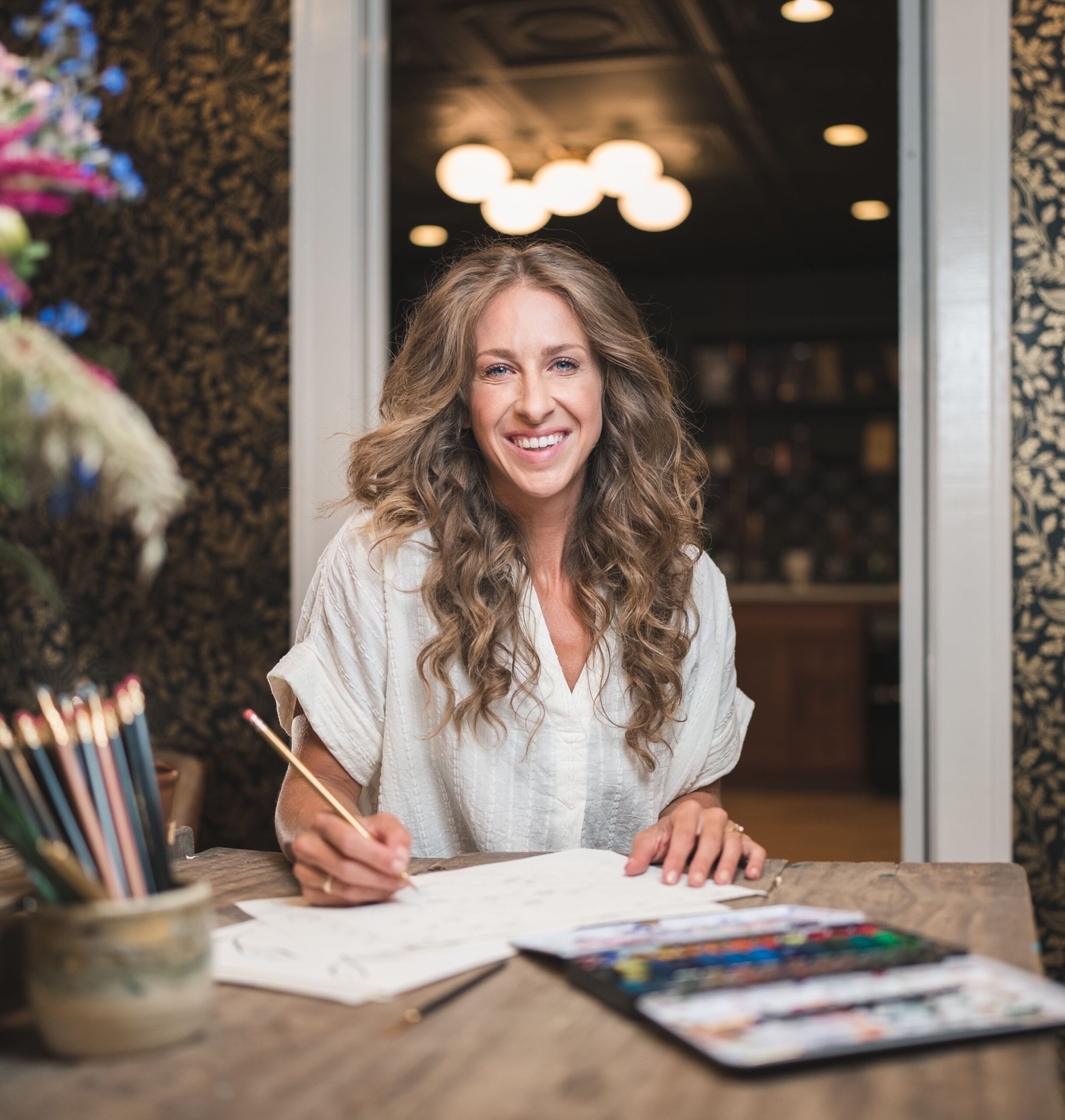
Paragraph
Welcome back to the show one of our favorite past guests, renowned surface pattern designer Bonnie Christine, for our second encore episode!
While our first conversation focused on building a business—this time around, we’re getting real about how to build a life alongside that business. No fluff, just the good, the bad, and the messy middle of juggling entrepreneurship and family.
In today’s episode, Bonnie is sharing how she scaled her business to multi-seven figures, built a thriving community of 185k creators, and did it all—mostly from her spare bedroom. From time management hacks that’ll have you scribbling notes faster than your kids can ask for a snack, to productivity tips that actually stick, Bonnie’s giving us the real scoop on what’s worked (and what hasn’t) when it comes to balancing business growth, family life, and everything in between.
Tune in for a real conversation about how to keep it all afloat without losing your cool.
APPLE PODCASTS | SPOTIFY
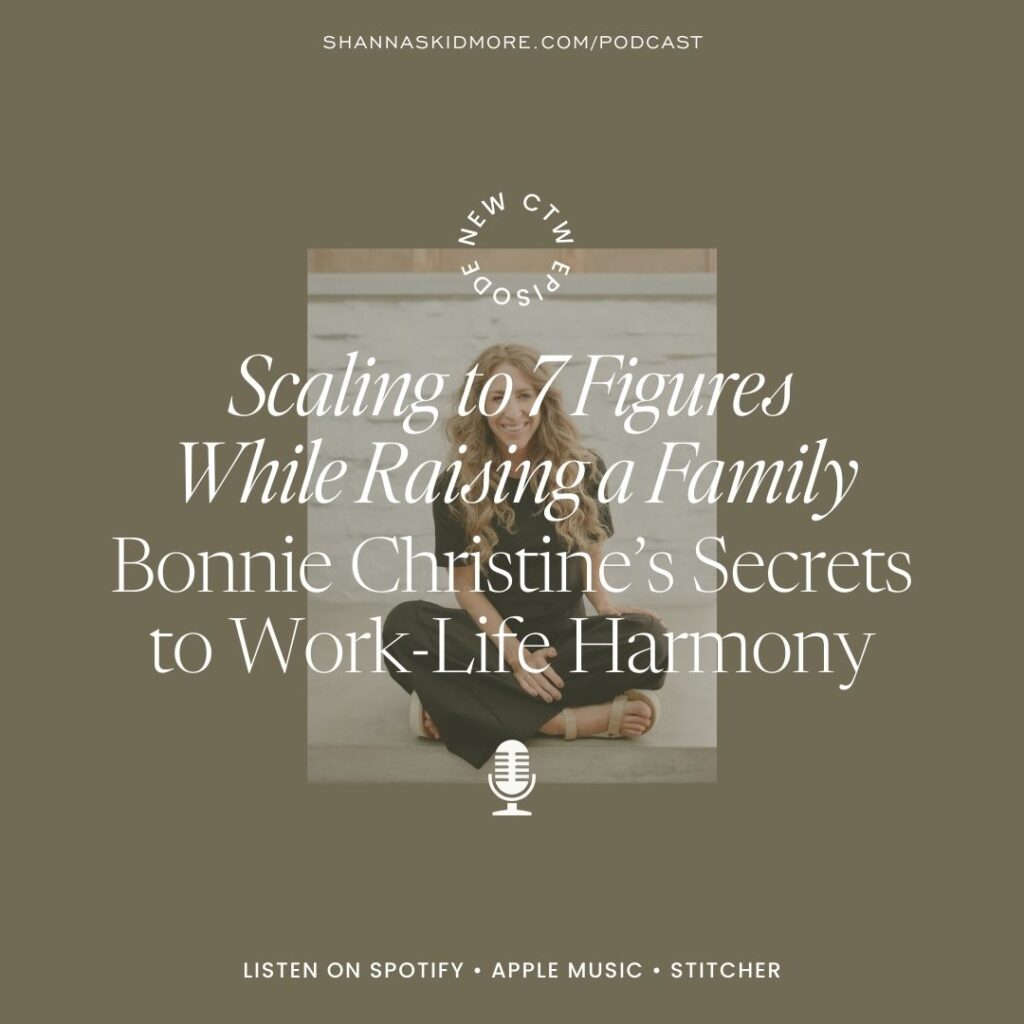
What life looked like while starting a business for Bonnie Christine
I have two kids and I’m married to David. We met in high school and started dating the week before he graduated—so I like to call us high school sweethearts. We dated through college and got married in 2008, so we’ve been married for 16 years and together for 20. Our kids are turning nine and eleven this week, and all of our family birthdays fall within about 10 days—it’s basically birthday week over here.
I started my business in 2009, and my son was born in 2013. So I had about four years to build the business before becoming a mom. That first year, I made around $11,000, and as a family we were living on under $40,000. By 2013, the business was bringing in maybe around $50,000, so things were growing. My husband worked a traditional 9-to-5, and I was working from home while raising our son.
He was also a cycling coach and a professional cyclist, so his evenings were spent training, and weekends were all about bike races—we’d bring the baby along everywhere. He’s since moved on from that, but it’s such a vivid memory of that phase of life.
Becoming a Mom After Starting Her Business
I had my daughter in 2015, and that year I finally broke into six figures—between $100K to $300K during that period. It felt like a huge milestone. But with two small kids and a growing business, it became harder to juggle everything. When I hit $350,000 in revenue, we made the big decision to have David leave his job and come home.
At the time, I had no team—just me running everything, which looking back, was a big mistake. And even though we’re pretty traditional in our roles and values, we suddenly had to figure out how to navigate this new dynamic. Who handles the doctor’s appointments? Who’s doing what? It took us about a year to really find our rhythm.
Another big shift was realizing that my income wasn’t just extra—it was the main income. It wasn’t just for fun things or paying off debt—it became essential for our mortgage, car payments, everything. That pressure felt very different. I remember thinking, “I don’t envy the primary breadwinner role.” It’s a lot to carry.
Changing Up Her Offers to Hit 6 Figures
Yeah, so I have this listed—it might be worth pulling up—but I was licensing my artwork, and I still do that today. I make about six figures from licensing alone. That was really what got me to six figures in the first place.
That’s really my bread and butter—surface pattern design and creating artwork for products. Licensing is great because you do the work once and get paid for it residually, over and over again. It builds slowly, but it compounds over time, and it’s a really beautiful revenue stream.
I also dabbled in a handmade shop. I had an Etsy store where I sold handmade goods. Around that time, I was just starting to experiment with education. I had a few classes on Skillshare, one on Creative Live, and I was also selling digital assets—things like video tutorials and eBooks.
Prioritizing Residual Income
The biggest thing I learned in 2012 was the power of residual income—finding ways to move away from trading time for money and instead doing something once and getting paid repeatedly. That became a big focus for me. So things like licensing, online classes, digital products—all of that became part of my business model.
Another thing I started in 2012 was my membership. It’s still going today—now 12 years old. It’s changed a lot over the years, but it’s always been a consistent source of recurring revenue. That’s so important for creative entrepreneurs because you can have a great month, and then a dry season. A membership helps smooth out those ups and downs.
I launched it with a blog post—$5 a month—and that first weekend, 200 people joined. That was $1,000 a month in recurring revenue, which at the time was the most consistent income I’d ever had. It continued to grow in the background. Today, the membership is for alumni of my Surface Design Immersion course. It’s evolved over time, but it’s always been design-focused. Now it has over 4,000 members at $47 a month. That kind of recurring, reliable revenue really helps you sleep at night—it covers the basics and gives you stability.
So by then I had multiple revenue streams—licensing, digital products, membership, handmade goods. But it wasn’t until 2018 that things really scaled, when I leaned more fully into education and launched my first signature course.
Bonnie Christine on Building a Business with Babies at Home
I was literally running to my computer during nap time. My kids were great nappers, and as soon as it made sense, I started stacking their naps at the same time. With one child, it was fairly easy—when he slept, I worked. End of story.
I remember realizing I was doing something a little different from the other moms I knew. Most of them used nap time to rest or catch up on chores. I didn’t do that—I did chores with my baby. He’d be on the floor playing while I folded laundry, or in the kitchen with me while I cooked. But if he was asleep, I was working—no exceptions.
I’d literally run from the nap room to my computer every day. That’s when I really learned time management. Before having kids, I had all day, and I didn’t realize how much time I wasted. Once my time was limited, I got just as much done in a fraction of the time—because I had to. It forced me to say no to things that didn’t really move the needle in my business and taught me how to focus, which is such a challenge for creatives. We have so many ideas, but focus is often our biggest struggle. Having limited time was actually a gift—it sharpened my focus.
Doing the Difficult Thing First
Another thing I learned was to do the most difficult task first. When you’re working during nap time, you never know how long you have. I used to put off the harder projects, afraid my baby would wake up before I could finish. But once I started tackling those first, it made a huge difference in my productivity.
When I had my second child, I again synced their naps as soon as it made sense. We did everything else together—chores, errands, daily life—and nap time was always work time. That gave me about three hours of focused work a day.
My mom lived about two hours away at the time, but she would come one day a week—what we called “Mimi Monday”—and that gave me a solid six or seven-hour workday once a week. But otherwise, everything got done during nap time, and it worked.
Deciding The Kind of Mom You Want To Be
My biggest effort or goal was to be available. I wanted to work with my children alongside me. I wanted to work at home. So that meant even if I was working—when I think back on this, my kids were a little older, maybe three and five—one of them wasn’t even napping anymore, and I was still working. David was home by then, and naps were getting fewer and fewer. So what are you doing now?
I would have work hours and we would communicate about that, but it also meant that if there was a boo-boo or a nap time, I was there. What I remember most is just feeling really scrambled. By the end of the day, my mind was fried because I was zooming into work, then zooming out to be a mom—zoom in, zoom out, zoom in, zoom out—all day long.
It was interrupted work, and honestly, I don’t have any advice for that—it’s just the name of the game. It’s the season. It’s scrambled. It’s zoom in, zoom out. And it’s exactly your calling—to be both a mother and an entrepreneur. You’re just going to have a few years where at the end of the day, you’re not even sure what your name is. And also, it’s going to be so worth it.
Bonnie Christine on Becoming the Main Household Income
This is something I think more people should talk about. It’s tricky—even when you do it well, it’s still tricky. We navigated it beautifully, and it was still tricky. A lot of it was just figuring out day-to-day logistics—like, “Are you taking the kids to school or am I?” And I’d think, “Well, if I were a stay-at-home mom and you were working a 9-to-5, I’d be doing both.” So now that the roles have flipped, does that mean it’s the opposite? We had so many conversations like that—just trying to figure out, “What does this actually look like now?”
I wish my husband were here, because this part is important. I’ve always wanted him to be the leader of our home, and that brings up a bigger conversation: How do you separate leadership from financial provision? Because they’re not the same thing. And so often we assume one implies the other, but it doesn’t. Financial provision does not equal leadership.
David absolutely leads our family. He sacrifices daily—he handles all the not-so-fun stuff like paying bills, managing doctor’s appointments, and all of those behind-the-scenes things. There’s a deep mutual respect in that. And I think that’s another place where people can get stuck—thinking respect is tied to income. But it’s not. Respect should exist no matter who’s doing what.
From Fun Money to Household Income
And then for me, there was also a shift around money. In the beginning, it felt like “my” money—because it was fun money. I’d make $10,000 and we’d use it to pay off debt, take a trip, or shop at Whole Foods and Lululemon. It felt extra. It felt optional. But when that shifted and my income became necessary, it no longer felt like “mine”—it was our family’s money. Just like when he was earning the primary income, it wasn’t just his—it was ours.
We don’t ask for permission for purchases—we respect each other, and we manage it all together. Communication is everything. Respect is everything. That’s true in any marriage, but especially when roles are shifting. It took us about 18 months to really settle into a smooth groove with it all. But it’s possible—and so worth working through.
Transitioning Between Work and Motherhood
The biggest thing for me was learning how to transition from work to life and motherhood. That shift really happened when my kids started going to school. It was a tough transition because for about five years, there wasn’t really a clear boundary—work happened in the fringes, in that in-and-out, scrambled rhythm. I made it work, but it was chaotic.
Then suddenly, with them in school, I had this protected work time—but I was still in that nonstop mode. And I really love what I do, Shanna—I could think about business all day. I’d consume business content constantly if I let myself. So when my kids started coming home from school, I found I was still multitasking, still in work mode.
I had to learn to intentionally shut it down—to close the laptop, put everything away, and protect that time. I had to fully transition from work to mom mode. Because no one wants multitasking mom—they want fully present mom. And for me, success as a mom means just that: being fully present when I’m with my kids.
Navigating Different Seasons of Motherhood
So from 2013 to 2017—those four years—I had both of my children. I came out of that season with a two-year-old and a four-year-old. It was a beautiful time, but also kind of a black hole—a baby-filled blur. I remember feeling like the whole world was passing me by.
For me, one specific example was email lists. I kept hearing how essential they were, how your business relied on them. And mine was cold and dead. I had about 4,000 people on a list—just from being in business over the years—but my open rate was 6%, which, if you don’t know, is really bad. Minimum should be around 40%. Ours now is closer to 50 to 60%. So yeah, 6% was awful. I just remember thinking, “I don’t know if I can come back from this.” I didn’t have the time or the mental bandwidth to even figure out how.
Then I read a book—Your Best Year by Lisa Jacobs, who, fun fact, is now my COO. It just hit me at exactly the right time. It lit a fire under me, and I came out of that fog on fire. Within the next year, I doubled my list to 8,000 people and brought my open rate up to 60%. I launched a course to that list. My goal was 100 students—I had 352. The course was $1,000, so I made $352,000. It completely changed our lives.
Dealing with Mom Guilt
I mean, there’s not a mother out there who doesn’t experience mom guilt—everyone does. But I’ve worked really hard on my mindset around it, because I truly believe it’s a gift for my children to see what an entrepreneurial life looks like. I want them to understand what it means to be entrepreneurial, and I try to pull them into what I’m doing as much as possible. We have regular conversations about it—what it looks like to do work you love and to prioritize passion over money.
Honestly, I think that’s part of why we’ve been successful—because we chose to pursue what we loved first, and the money followed.
So I’ve been really intentional about my mindset. I don’t let myself spiral into guilt, because I know I’m doing good work. I’m showing up as a good mom and a great wife—and yes, it’s a lot to juggle—but I really believe it’s valuable for my kids to see it. So I try to keep that perspective positive in my mind.
How Bonnie Christine is Running Her Business Now
I work outside of the home now. I have a studio space in the downtown area of our little town, and honestly, it was a game changer. I didn’t want that at first, but once my kids started going to school, I found myself home alone all day and thought, What am I doing here? Having that separate space has made such a difference—it really helps me transition between work and home life more smoothly.
I also want to talk about something that’s made all of this possible: getting help—both in my business and especially in my home.
Getting help in your business is huge. I highly recommend it—start with a VA as soon as you can and build from there. I have a team of 11 now, and it’s amazing. But the part I really want to emphasize, especially for moms, is getting help at home. That’s actually where I think you should start—before you even build out your business team.
Getting Help At Home
It took me a long time to figure that out. We started small—just a house cleaner once a month, and it was such a gift. Eventually we went to twice a month, then once a week. That’s when we started getting help with laundry, and eventually we hired a house manager.
We still have the same amazing woman—she’s in our home every single day now. She helps with all the cleaning, grocery shopping, meal prep, home organization, repairs, managing lawn care—all the things that add up. Honestly, it’s 30 to 40 hours of work per week, and so often, we try to carry that on top of being the mom, the wife, the business owner—and it’s just not possible. And it shouldn’t be normalized as something we should be able to do alone. It’s not sustainable.
I actually have a list of everything our house manager does, and when I share it with entrepreneurial women, they often cry—and I cry too—because we all feel the weight of it. We feel the pressure of keeping the home running, and when it’s not taken care of, we feel that weight even more. It becomes this underlying stress.
We don’t have help with our children—our goal is to get help with the home, so that any time we do have at home can be spent with our kids, and it’s quality time. If your kids are older, you know how it gets with sports, homework, and school stuff. You might only have two good hours in the evening—and I want those hours to really count.
Finding Your Freedom Number
If you think you can’t afford a house manager… we all have what I call a freedom number—the value of your time per hour. To do some simple math: if you make $100,000 a year and work 40 hours a week, that’s about 2,080 hours per year. That means your time is worth roughly $48 an hour.
So, if you’re earning $100K and working full-time—whether in your own business or someone else’s—then anytime you can hire something out for less than $48 an hour, you should seriously consider it.
If you look at the revenue graph for my business, there’s a clear turning point—an “elbow”—and that point is when I made my first hire. We often have so much fear around paying someone else, but hiring help frees up your time to focus on the real moneymaking work.
If your freedom number is under $12 an hour, you’re probably still doing everything yourself—and that’s normal in the early stages. I did it for way too long. By the time I finally figured this out, my freedom number was around $97 an hour. I had been a one-woman show for nearly a decade with no help—and honestly, that’s not something to aspire to. It was a mistake.
Once I started hiring, everything changed. Today, my freedom number is about $2,700 an hour, and that’s because I started outsourcing early—even when the number was lower. It’s really just a numbers game. If you can hire something out for less than your time is worth, you’re freeing yourself up to focus on the work that actually grows your business.
Loving This Season of Motherhood
Well, you’re asking me this at the end of our summer, and honestly, this has felt like the first real summer I’ve had since I was a child. It was the first summer where we didn’t put the kids in any camps—no karate, no gymnastics—nothing structured. We were just together as a family.
We traveled a ton—so much that I couldn’t take the entire summer off, so I had to work while we were on the road. But we found this beautiful rhythm. Whether we were in an RV or off in Iceland, Montana, or Canada, we got into this groove where I’d work in the mornings, and then we’d spend the rest of the day together as a family. We were shoulder-to-shoulder all summer long, and it was so special.
It felt like true balance—showing our kids that work is a part of life, that it’s important and necessary—but also modeling the freedom that work can provide. I’d bring them into what I was doing, show them how it works, and explain why it matters. But the flexibility—being able to adjust my work around whether we were hiking in the morning or soaking in a hot spring in the evening—that’s what I love most right now. It’s that mix of work ethic and freedom that I hope they remember.
Encouragement For Working Moms
It’s beautiful—you really can do both. You can be an amazing mother and an incredible entrepreneur. You can use this journey as a way to teach your children that they can do hard things, too.
The stage you’re in right now—it’s so short. That wasn’t always clear to me. I remember thinking, I’m not sure I can do this forever. But then I realized—it’s not going to be like this forever. It’s actually just a short season where things feel scattered or overwhelming.
Whatever season you’re in, it’s temporary. You can push through it, and it is so incredibly worth it. And most importantly, you’re not alone. So many of us are doing this same work—trying to raise families and build businesses at the same time.
Find a group, a community, a Facebook group—some space where there are other entrepreneurial moms—so you can remind yourself: you’re not the only one. We’re in this together.
More from this Episode
To hear the full story and more about Bonnie Christine, press play on the player above for the full interview or click here to download the transcript.
📌 RESOURCES MENTIONED:
Shanna on Bonnie’s podcast, The Professional Creative
Free Five Day Workshop— Your Pattern Design Playbook
—

Bonnie Christine
Bonnie Christine is an internationally renowned Surface Pattern Designer, entrepreneur, and award-winning online educator. She’s been creating delicate and ethereal artwork for brands and products around the world since 2009. She’s a mama, artist and fabric designer living nestled back in the hills of the Great Smoky Mountains. Her goal is to help creatives earn a living doing what they love. Her journey of being a self-taught designer and learning ‘the hard way’ is exactly what drives her passion for teaching others how to become a successful creative entrepreneur.
CONNECT WITH BONNIE:
February 6, 2025
Previous Post:
Next Post:
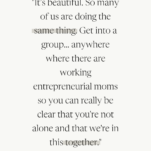

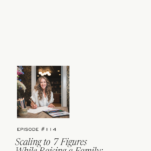
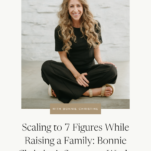
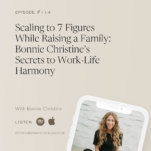
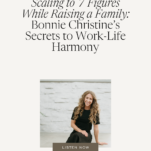

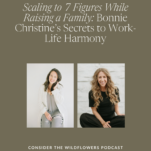
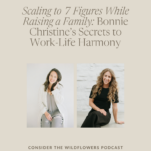
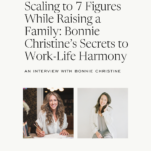
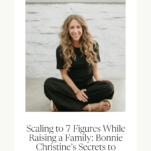
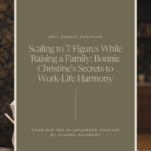
And if you found this helpful, share with your friends!